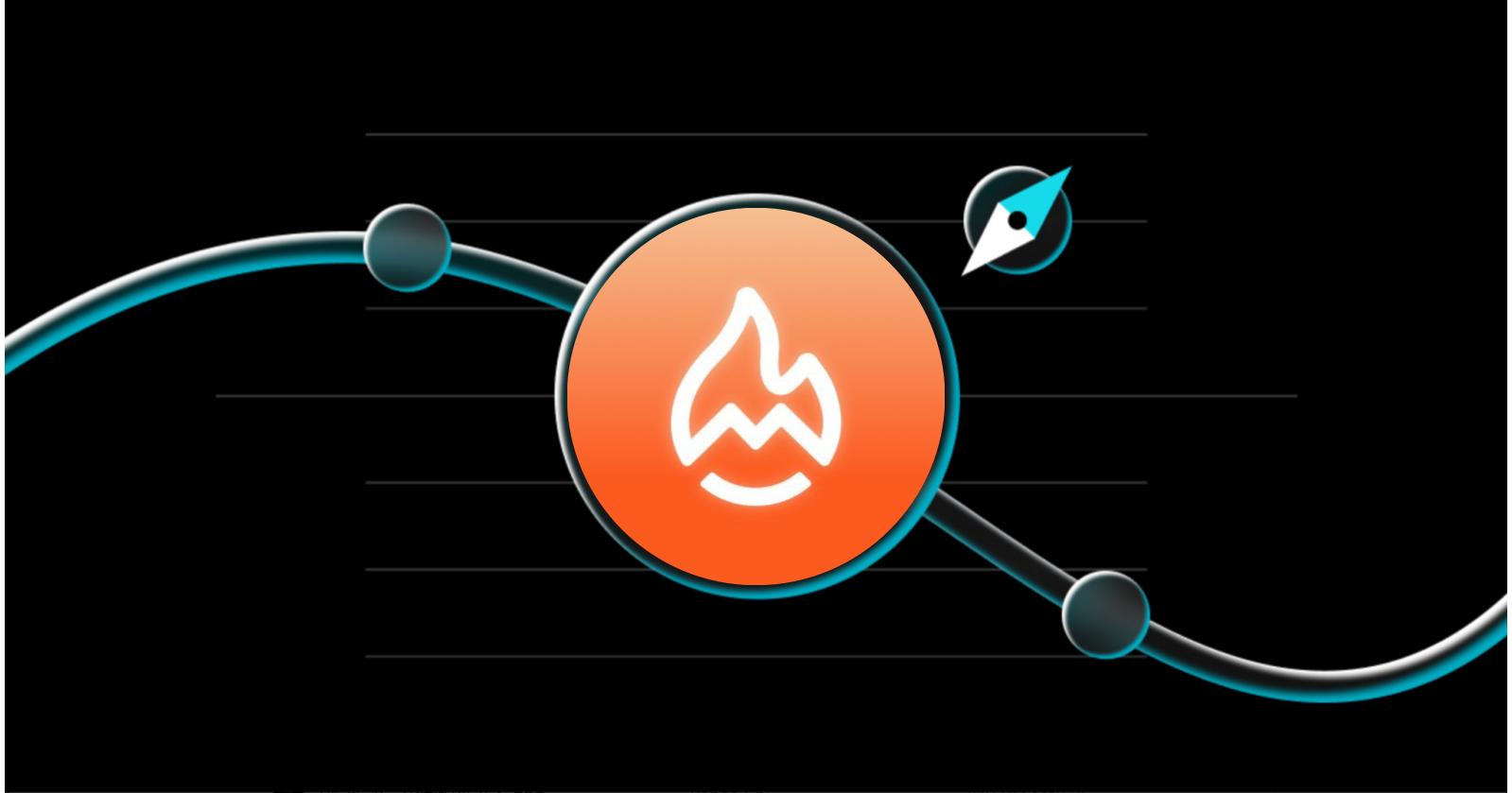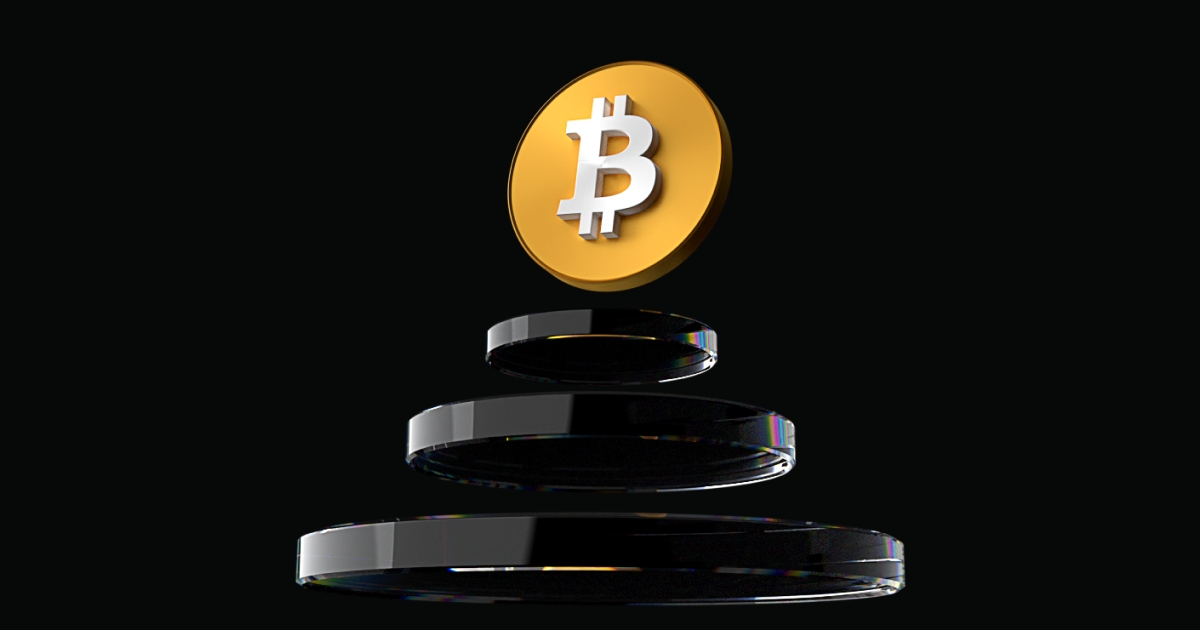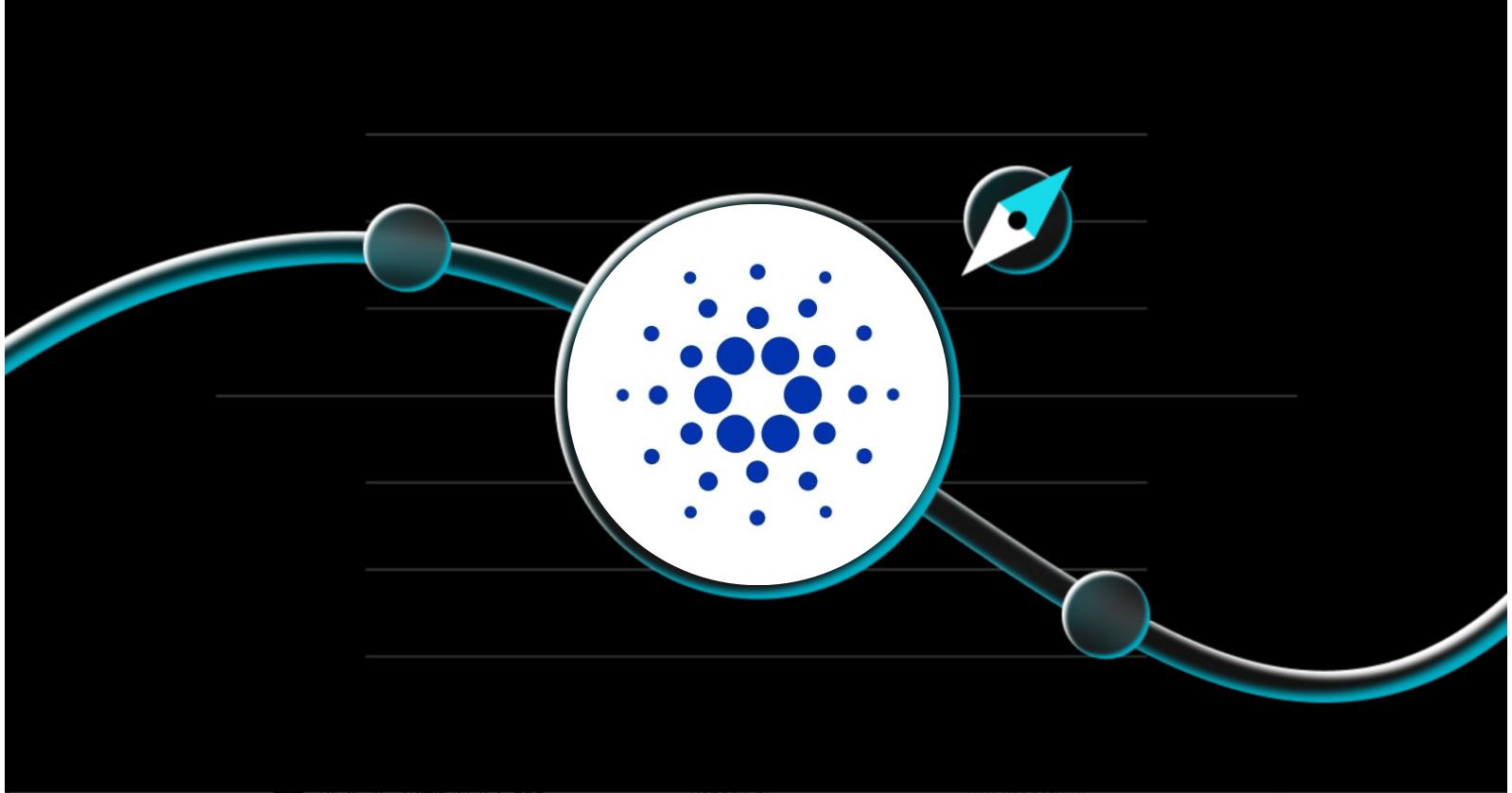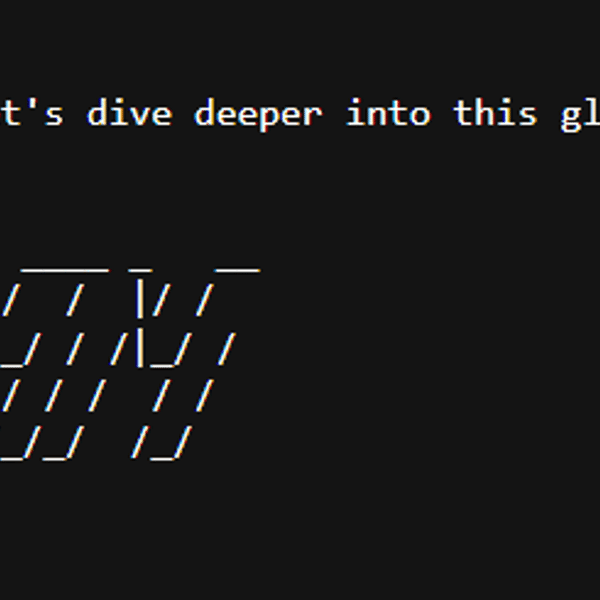Bitget: Top 4 in global daily trading volume!
Please also display BTC in AR59.29%
ETH gas fees ngayon: 0.1-1 gwei
BTC/USDT$86450.00 (-0.07%)Fear at Greed Index17(Extreme fear)
Altcoin season index:0(Bitcoin season)
Total spot Bitcoin ETF netflow +$75.4M (1D); -$1.66B (7D).Welcome gift package para sa mga bagong user na nagkakahalaga ng 6200 USDT.Claim now
Trade anumang oras, kahit saan gamit ang Bitget app.I-download ngayon
Bitget: Top 4 in global daily trading volume!
Please also display BTC in AR59.29%
ETH gas fees ngayon: 0.1-1 gwei
BTC/USDT$86450.00 (-0.07%)Fear at Greed Index17(Extreme fear)
Altcoin season index:0(Bitcoin season)
Total spot Bitcoin ETF netflow +$75.4M (1D); -$1.66B (7D).Welcome gift package para sa mga bagong user na nagkakahalaga ng 6200 USDT.Claim now
Trade anumang oras, kahit saan gamit ang Bitget app.I-download ngayon
Bitget: Top 4 in global daily trading volume!
Please also display BTC in AR59.29%
ETH gas fees ngayon: 0.1-1 gwei
BTC/USDT$86450.00 (-0.07%)Fear at Greed Index17(Extreme fear)
Altcoin season index:0(Bitcoin season)
Total spot Bitcoin ETF netflow +$75.4M (1D); -$1.66B (7D).Welcome gift package para sa mga bagong user na nagkakahalaga ng 6200 USDT.Claim now
Trade anumang oras, kahit saan gamit ang Bitget app.I-download ngayon


BitwiseSOL (BITWISESOL) Price Prediction
Hindi naka-list
Magkano kaya BitwiseSOL maging sulit sa 2025, 2026, 2030, at higit pa? Ano ang hinulaang presyo ng BitwiseSOL para bukas, ngayong linggo, o ngayong buwan? At anong return on investment ang maaari mong makuha sa pamamagitan ng paghawak BitwiseSOL hanggang 2050?
Ang pahinang ito ay nag-aalok ng parehong panandalian at pangmatagalan BitwiseSOL mga tool sa paghula ng presyo upang matulungan kang suriin BitwiseSOLpagganap ng presyo sa future. Maaari ka ring magtakda ng sarili mong mga pagtataya upang tantyahin ang future na halaga ng BitwiseSOL.
Mahalagang tandaan na, dahil sa likas na volatility at pagiging kumplikado ng market ng cryptocurrency, ang mga hulang ito—habang nag-aalok ng mga insight sa mga potensyal na hanay ng presyo at mga sitwasyon—ay dapat tingnan nang may pag-iingat at pag-aalinlangan.
Ang pahinang ito ay nag-aalok ng parehong panandalian at pangmatagalan BitwiseSOL mga tool sa paghula ng presyo upang matulungan kang suriin BitwiseSOLpagganap ng presyo sa future. Maaari ka ring magtakda ng sarili mong mga pagtataya upang tantyahin ang future na halaga ng BitwiseSOL.
Mahalagang tandaan na, dahil sa likas na volatility at pagiging kumplikado ng market ng cryptocurrency, ang mga hulang ito—habang nag-aalok ng mga insight sa mga potensyal na hanay ng presyo at mga sitwasyon—ay dapat tingnan nang may pag-iingat at pag-aalinlangan.
BitwiseSOL tsart ng prediction ng presyo para sa 2025 at higit pa
Nanghuhula BitwiseSOLang presyo sa susunod na 10 araw batay sa hinulaang pang-araw-araw na rate ng paglago na +0.014%.
Presyo ngayon (Dec 18, 2025)
$0.0002933
Presyo bukas (Dec 19, 2025)
$0.0002933
Presyo sa loob ng 5 araw (Dec 23, 2025)
$0.0002935
Presyo ngayong buwan (Dec 2025)
$0.0002937
Presyo sa susunod na buwan (Jan 2026)
$0.0002950
Presyo sa 5 buwan (May 2026)
$0.0002999
Presyo sa 2025
$0.0003005
Presyo sa 2026
$0.0003155
Presyo sa 2030
$0.0003835
Batay sa panandaliang BitwiseSOL araw-araw na mga prediction sa presyo, ang presyo ng BitwiseSOL ay inaasahang maging $0.0002933 sa Dec 18, 2025, $0.0002933 sa Dec 19, 2025, at $0.0002935 sa Dec 23, 2025. Para sa BitwiseSOL buwanang mga prediction sa presyo, ang presyo ng BitwiseSOL ay inaasahang maging $0.0002937 sa Dec 2025, $0.0002950 sa Jan 2026, at $0.0002999 sa May 2026. Para sa pangmatagalan BitwiseSOL taunang mga prediction sa presyo, ang presyo ng BitwiseSOL ay inaasahang maging $0.0003005 sa 2025, $0.0003155 sa 2026, at $0.0003835 sa 2030.
BitwiseSOL prediction ng presyo para sa araw na ito
Ang kasalukuyang presyo ng BitwiseSOL (BITWISESOL) ay $0.0002931, na may 24h na pagbabago sa presyo ng 0.00%. Ang presyo ng BitwiseSOL (BITWISESOL) ay inaasahang maabot $0.0002933 ngayon. Matuto pa tungkol sa BitwiseSOL presyo ngayon.
BitwiseSOL price prediction para sa Dec 2025
Ang presyo ng BitwiseSOL (BITWISESOL) ay inaasahang magbabago ng Infinity% sa Dec 2025, at ang presyo ng BitwiseSOL (BITWISESOL) ay inaasahang maabot $0.0002937 sa pagtatapos ng Dec 2025.
BitwiseSOL prediction ng presyo para sa 2025
Ang presyo ng BitwiseSOL (BITWISESOL) ay inaasahang magbabago ng Infinity% sa 2025, at ang presyo ng BitwiseSOL (BITWISESOL) ay makakarating $0.0003005 sa pagtatapos ng 2025.
Long-term BitwiseSOL price prediction: 2026, 2030, 2035, 2040, 2050
Ang sumusunod ay a BitwiseSOL modelo ng hula sa presyo batay sa isang nakapirming rate ng paglago. Binabalewala nito ang epekto ng pagbabagu-bago sa market, panlabas na pang-ekonomiyang salik, o mga emerhensiya, at sa halip ay nakatuon sa average na trend ng presyo ng BitwiseSOL. Tinutulungan nito ang mga investorna mag-analisa at mabilis na kalkulahin ang potensyal na tubo ng pag-invest BitwiseSOL.
Ilagay ang iyong hinulaang taunang rate ng paglago para sa BitwiseSOL presyo, at tingnan kung paano ang BitwiseSOL magbabago ang halaga saf uture.
Ilagay ang iyong hinulaang taunang rate ng paglago para sa BitwiseSOL presyo, at tingnan kung paano ang BitwiseSOL magbabago ang halaga saf uture.
Taon-taon BitwiseSOL prediksyon ng presyo batay sa 5% hinulaang taunang paglago
%
Hinulaang taunang paglago. Maglagay ng porsyento sa pagitan ng -100% at +1000%.
| Year | Predicted price | Total ROI |
|---|---|---|
2026 | $0.0003155 | +5.00% |
2027 | $0.0003313 | +10.25% |
2028 | $0.0003478 | +15.76% |
2029 | $0.0003652 | +21.55% |
2030 | $0.0003835 | +27.63% |
2035 | $0.0004894 | +62.89% |
2040 | $0.0006247 | +107.89% |
2050 | $0.001017 | +238.64% |
Batay sa taunang rate ng paglago ng 5%, ang BitwiseSOL (BITWISESOL) inaasahang aabot ang presyo $0.0003155 sa 2026, $0.0003835 noong 2030, $0.0006247 noong 2040, at $0.001017 noong 2050.
BitwiseSOL prediction ng presyo para sa 2026
Sa 2026, batay sa isang hinulaang taunang rate ng paglago ng 5%, ang presyo ng BitwiseSOL (BITWISESOL) ay inaasahang maabot $0.0003155. Batay sa forecast na ito, ang pinagsama-samang return on investment mula sa paghawak BitwiseSOL hanggang sa dulo ng 2026 magiging 5.00%.
BitwiseSOL prediction ng presyo para sa 2030
Sa 2030, batay sa isang hinulaang taunang rate ng paglago ng 5%, ang presyo ng BitwiseSOL (BITWISESOL) ay inaasahang maabot $0.0003835. Batay sa forecast na ito, ang pinagsama-samang return on investment mula sa paghawak BitwiseSOL hanggang sa dulo ng 2030 magiging 27.63%.
BitwiseSOL prediction ng presyo para sa 2035
Sa 2035, batay sa isang hinulaang taunang rate ng paglago ng 5%, ang presyo ng BitwiseSOL (BITWISESOL) ay inaasahang maabot $0.0004894. Batay sa forecast na ito, ang pinagsama-samang return on investment mula sa paghawak BitwiseSOL hanggang sa dulo ng 2035 magiging 62.89%.
BitwiseSOL prediction ng presyo para sa 2040
Sa 2040, batay sa isang hinulaang taunang rate ng paglago ng 5%, ang presyo ng BitwiseSOL (BITWISESOL) ay inaasahang maabot $0.0006247. Batay sa forecast na ito, ang pinagsama-samang return on investment mula sa paghawak BitwiseSOL hanggang sa dulo ng 2040 magiging 107.89%.
BitwiseSOL prediction ng presyo para sa 2050
Sa 2050, batay sa isang hinulaang taunang rate ng paglago ng 5%, ang presyo ng BitwiseSOL (BITWISESOL) ay inaasahang maabot $0.001017. Batay sa forecast na ito, ang pinagsama-samang return on investment mula sa paghawak BitwiseSOL hanggang sa dulo ng 2050 magiging 238.64%.
Magkano ang kikitain mo sa iyong BitwiseSOL?
Kung mamuhunan ka $100 sa BitwiseSOL ngayong taon at tumagal hanggang 2026, ang prediction sa presyo ay nagmumungkahi ng potensyal na tubo ng $5, sumasalamin sa a 5.00% ROI. (Ang mga bayarin ay hindi kasama sa pagtatantya na ito).
Disclaimer: Hindi ito payo sa investment. Ang impormasyong ibinigay ay para sa pangkalahatang layuning pang-impormasyon lamang. Walang impormasyon, materyales, serbisyo at iba pang nilalamang ibinigay sa pahinang ito ang bumubuo ng isang pangangalap, rekomendasyon, pag-endorso, o anumang uri ng pampinansyal, investment, o iba pang payo. Humingi ng independiyenteng propesyonal na konsultasyon sa anyo ng payong legal, pinansyal, at piskal bago gumawa ng anumang desisyon sa investment.
panandalian BitwiseSOL talahanayan ng prediction ng presyo
Araw-araw BitwiseSOL na pag-predict batay sa a 0.014% hinulaang pang-araw-araw na paglago
Ano ang BitwiseSOL hula ng presyo para bukas, 5 days, 10 days, at higit pa?%
Predicted daily growth. Maglagay ng porsyento sa pagitan ng –100% at +1000%.
| Petsa | Predicted price | Total ROI |
|---|---|---|
Dec 19, 2025 (Tomorrow) | $0.0002933 | +0.01% |
Dec 20, 2025 | $0.0002934 | +0.03% |
Dec 21, 2025 | $0.0002934 | +0.04% |
Dec 22, 2025 | $0.0002934 | +0.06% |
Dec 23, 2025 (5 days later) | $0.0002935 | +0.07% |
Dec 24, 2025 | $0.0002935 | +0.08% |
Dec 25, 2025 | $0.0002936 | +0.10% |
Dec 26, 2025 | $0.0002936 | +0.11% |
Dec 27, 2025 | $0.0002936 | +0.13% |
Dec 28, 2025 (10 days later) | $0.0002937 | +0.14% |
Batay sa araw-araw na rate ng paglago ng 0.014%, ang presyo ng BitwiseSOL (BITWISESOL) ay inaasahang maabot $0.0002933 sa Dec 19, 2025, $0.0002935 sa Dec 23, 2025, at $0.0002937 sa Dec 28, 2025.
BitwiseSOL prediction ng presyo para sa Dec 19, 2025
Batay sa araw-araw na rate ng paglago ng 0.014% para sa BitwiseSOL hula sa presyo, ang tinantyang halaga ng 1 BitwiseSOL magiging $0.0002933 sa Dec 19, 2025 (Tomorrow). Ang inaasahang ROI mula sa pamumuhunan at paghold ng BitwiseSOL hanggang sa dulo ng Dec 19, 2025 ay 0.01%.
BitwiseSOL prediction ng presyo para sa Dec 23, 2025
Batay sa araw-araw na rate ng paglago ng 0.014% para sa BitwiseSOL hula sa presyo, ang tinantyang halaga ng 1 BitwiseSOL magiging $0.0002935 sa Dec 23, 2025 (5 days later). Ang inaasahang ROI mula sa pamumuhunan at paghold ng BitwiseSOL hanggang sa dulo ng Dec 23, 2025 ay 0.07%.
BitwiseSOL prediction ng presyo para sa Dec 28, 2025
Batay sa araw-araw na rate ng paglago ng 0.014% para sa BitwiseSOL hula sa presyo, ang tinantyang halaga ng 1 BitwiseSOL magiging $0.0002937 sa Dec 28, 2025 (10 days later). Ang inaasahang ROI mula sa pamumuhunan at paghold ng BitwiseSOL hanggang sa dulo ng Dec 28, 2025 ay 0.14%.
Buwan-buwan BitwiseSOL hula sa presyo batay sa a 0.42% hinulaang buwanang paglago
Ano ang BitwiseSOL hula ng presyo para sa susunod na buwan, 5 buwan, 10 buwan, at higit pa?%
Hinulaang buwanang paglago. Maglagay ng porsyento sa pagitan ng –100% at +1000%.
| Petsa | Predicted price | Total ROI |
|---|---|---|
Jan 2026 (Next month) | $0.0002950 | +0.42% |
Feb 2026 | $0.0002962 | +0.84% |
Mar 2026 | $0.0002974 | +1.27% |
Apr 2026 | $0.0002987 | +1.69% |
May 2026 (5 months later) | $0.0002999 | +2.12% |
Jun 2026 | $0.0003012 | +2.55% |
Jul 2026 | $0.0003025 | +2.98% |
Aug 2026 | $0.0003037 | +3.41% |
Sep 2026 | $0.0003050 | +3.84% |
Oct 2026 (10 months later) | $0.0003063 | +4.28% |
Batay sa isang buwanang rate ng paglago ng 0.42%, ang presyo ng BitwiseSOL (BITWISESOL) ay inaasahang maabot $0.0002950 sa Jan 2026, $0.0002999 sa May 2026, at $0.0003063 sa Oct 2026.
BitwiseSOL prediction ng presyo para sa Jan 2026
Batay sa isang buwanang rate ng paglago ng 0.42%, ang hinulaang presyo ng BitwiseSOL (BITWISESOL) sa Jan 2026 (Next month) ay $0.0002950. Ang inaasahang ROI mula sa pamumuhunan at paghold ng BitwiseSOL hanggang sa dulo ng Jan 2026 ay 0.42%.
BitwiseSOL prediction ng presyo para sa May 2026
Batay sa isang buwanang rate ng paglago ng 0.42%, ang hinulaang presyo ng BitwiseSOL (BITWISESOL) sa May 2026 (5 months later) ay $0.0002999. Ang inaasahang ROI mula sa pamumuhunan at paghold ng BitwiseSOL hanggang sa dulo ng May 2026 ay 2.12%.
BitwiseSOL prediction ng presyo para sa Oct 2026
Batay sa isang buwanang rate ng paglago ng 0.42%, ang hinulaang presyo ng BitwiseSOL (BITWISESOL) sa Oct 2026 (10 months later) ay $0.0003063. Ang inaasahang ROI mula sa pamumuhunan at paghold ng BitwiseSOL hanggang sa dulo ng Oct 2026 ay 4.28%.
Nagte-trend na mga artikulo ng prediction sa presyo ng cryptocurrency

Bitcoin Price Today: BTC Falls Below $87,000 as U.S. Unemployment Hits a Four-Year High
Bitcoin’s price moved sharply lower today after fresh U.S. labor market data signaled growing economic stress. The world’s largest cryptocurrency briefly fell to around $85,300, its lowest level in roughly two weeks, before stabilizing near the $87,000 range. The decline followed the release of a closely watched U.S. jobs report showing that the unemployment rate rose to 4.6%, the highest level in four years. The data triggered a cautious, risk-off reaction across financial markets, weighing on cryptocurrencies alongside stocks and other high-risk assets.
For many investors, especially beginners, the link between unemployment figures and Bitcoin’s price may not be immediately obvious. However, macroeconomic indicators like jobs data play a crucial role in shaping expectations around interest rates, monetary policy, and overall market confidence. Rising unemployment can signal a slowing economy, prompting investors to reduce exposure to volatile assets such as Bitcoin. At the same time, weaker labor conditions may eventually push the U.S. Federal Reserve toward looser monetary policy, which has historically been supportive of crypto markets. This dynamic tension helps explain why Bitcoin is experiencing heightened volatility as traders reassess both near-term risks and longer-term opportunities.
Latest Bitcoin Price Update
Bitcoin (BTC) Price
Source: CoinMarketCap
Bitcoin is trading under pressure as markets digest the latest macroeconomic signals. At the time of writing, BTC is hovering around the $86,000–$88,000 range, after experiencing a sharp intraday drop earlier in the session. The price briefly fell to approximately $85,300, marking its lowest level in nearly two weeks, before buyers stepped in to limit further losses. Despite the rebound, Bitcoin remains down about 1–2% on the day, reflecting persistent caution among traders.
On a broader scale, Bitcoin’s recent pullback has erased much of its earlier momentum. The cryptocurrency has now slipped into negative territory for the year, wiping out gains accumulated during its strong rally in previous months. Bitcoin’s market capitalization stands at roughly $1.7 trillion, while 24-hour trading volume has surged, a sign of heightened volatility and active repositioning by investors. Elevated volume during price declines often indicates uncertainty, as traders reassess risk and adjust portfolios in response to new economic data.
Zooming out to the weekly trend, Bitcoin has been gradually trending lower after failing to hold key psychological levels above $90,000. Analysts note that BTC is currently consolidating near important support zones, with $85,000 acting as a short-term floor. While the longer-term structure remains intact, short-term momentum has weakened, largely due to macroeconomic headwinds rather than crypto-specific news. This suggests that Bitcoin’s current price action is being driven more by global economic sentiment than by changes within the blockchain or digital asset ecosystem itself.
U.S. Unemployment Data Overview
United States Unemployment Rate
Source: U.S. Bureau of Labor Statistics
The latest pressure on Bitcoin followed the release of new U.S. labor market data showing a notable rise in unemployment. According to the most recent government report, the U.S. unemployment rate climbed to 4.6% in November, marking its highest level in four years. The figure exceeded market expectations and signaled a cooling labor market after a prolonged period of strength. While the headline number remains relatively low by historical standards, the upward trend has raised concerns that economic momentum in the United States may be slowing.
Digging deeper into the report reveals a mixed picture. U.S. employers added approximately 64,000 jobs in November, beating economists’ forecasts but failing to offset the sharp job losses recorded in October, when payrolls fell by more than 100,000 positions due largely to government layoffs. In addition, a broader measure of unemployment — which includes underemployed workers and those marginally attached to the labor force — rose to 8.7%, also the highest level since 2021. Together, these figures suggest that while hiring has not collapsed, job security and labor participation are weakening.
For financial markets, the implications are significant. Rising unemployment typically increases fears of an economic slowdown or recession, prompting investors to shift away from riskier assets such as equities and cryptocurrencies. At the same time, softer labor conditions can influence expectations around U.S. Federal Reserve policy, as prolonged weakness may force policymakers to support the economy through lower interest rates. This dual interpretation — economic risk versus potential monetary easing — has created uncertainty across markets, contributing directly to the volatility seen in Bitcoin following the report.
Market Reaction: Crypto and Beyond
Financial markets responded swiftly to the weaker-than-expected U.S. labor data, with cryptocurrencies among the first assets to feel the impact. Bitcoin’s sharp intraday drop reflected a broader risk-off move, as investors reduced exposure to volatile assets amid concerns about slowing economic growth. Major altcoins followed a similar pattern, with Ethereum and other large-cap cryptocurrencies posting losses as sentiment across the digital asset market turned cautious.
The reaction was not limited to crypto. U.S. equity markets, particularly technology and growth stocks, also faced renewed selling pressure. Bitcoin has increasingly traded in correlation with tech stocks, and recent declines in global equities have reinforced that relationship. Investors appear to be reassessing valuations after months of optimism driven by artificial intelligence growth and expectations of looser monetary policy. As stocks weakened, Bitcoin mirrored the downturn, highlighting its growing integration into the broader financial ecosystem.
Despite the initial sell-off, markets showed signs of stabilization as traders digested the full labor report. The fact that job growth remained positive, albeit modest, helped prevent panic selling. At the same time, expectations for immediate interest rate cuts by the U.S. Federal Reserve remained largely unchanged, limiting extreme market reactions. This recalibration led to a partial recovery in both equities and crypto prices, suggesting that while sentiment has turned more cautious, investors are not yet pricing in a severe economic downturn. For Bitcoin, this has translated into heightened volatility rather than a full-scale breakdown, as the market waits for clearer signals from upcoming inflation data and central bank guidance.
BTC Price Prediction: Can Bitcoin Reclaim the $100,000 Mark by Year-End?
With Bitcoin now trading well below recent highs, a key question for investors is whether BTC can regain momentum and eventually reclaim the $100,000 level. While the recent pullback has dampened short-term optimism, many analysts argue that the broader conditions needed for a renewed rally remain intact. From a technical perspective, Bitcoin’s current consolidation near the $85,000–$88,000 range suggests the market is searching for a stable base rather than entering a full bearish reversal. As long as BTC holds above major support near $85,000, the longer-term bullish structure is considered unbroken.
From a macroeconomic standpoint, Bitcoin’s path back toward $100,000 is closely tied to U.S. monetary policy. Historically, periods of lower interest rates and increased liquidity have been highly favorable for crypto assets. While the Federal Reserve is not expected to cut rates aggressively in the immediate term, the recent rise in unemployment strengthens the case for a more accommodative policy stance in 2026. If labor market weakness persists without triggering a deep recession, the Fed may move toward further rate cuts—an environment that has previously supported strong Bitcoin rallies.
Market sentiment data also points to continued confidence in Bitcoin’s upside potential. On crypto prediction markets, traders currently assign a clear majority probability that Bitcoin will reach $100,000 before revisiting significantly lower levels, reflecting belief in the asset’s long-term trajectory. Institutional interest remains another supportive factor, with spot Bitcoin investment products and growing regulatory clarity improving access for traditional investors. While short-term volatility is likely to continue, especially as macroeconomic data remains mixed, many analysts view the $100,000 mark as a realistic medium-term target rather than an outlier scenario.
That said, risks remain. A sharper-than-expected economic slowdown, renewed inflation pressures, or sudden tightening of financial conditions could delay or derail Bitcoin’s recovery. As a result, any move back toward six-figure prices is unlikely to be linear. Instead, Bitcoin’s journey toward $100,000 will likely involve periods of consolidation, pullbacks, and renewed volatility as markets respond to economic data and central bank signals.
Conclusion
Bitcoin’s latest pullback highlights how sensitive the cryptocurrency market has become to macroeconomic signals. The rise in U.S. unemployment to a four year high of 4.6 percent has weighed on investor confidence, prompting a shift away from risk assets and pushing Bitcoin lower after it struggled to hold above the 90,000 level. This reaction reflects broader uncertainty across global markets, where concerns about economic growth are beginning to outweigh the optimism that fueled earlier rallies.
At the same time, the bigger picture remains far from settled. A cooling labor market could ultimately pave the way for looser monetary policy, an environment that has historically supported Bitcoin’s long term growth. Whether BTC can regain momentum and move closer to the 100,000 mark by year end will depend on upcoming economic data, central bank decisions, and investor sentiment. As markets enter the final stretch of the year, the question remains whether this period of weakness is a warning sign or simply the calm before Bitcoin’s next major move.
Disclaimer: The opinions expressed in this article are for informational purposes only. This article does not constitute an endorsement of any of the products and services discussed or investment, financial, or trading advice. Qualified professionals should be consulted prior to making financial decisions.
Bitget Academy2025-12-17 06:25

What Is Magma Finance (MAGMA)? MAGMA Airdrop, Tokenomics, and What Might Happen to the Price Post-Launch
Decentralized finance has made incredible progress in recent years, but one issue continues to frustrate traders and liquidity providers alike: capital inefficiency. Many automated market makers still rely on outdated mechanics that scatter liquidity too thinly, cause high slippage during trades, and require constant manual adjustments from users. As a result, most liquidity providers are stuck with underperforming positions while traders suffer from unpredictable execution prices. This is especially true on newer blockchains like Sui, where liquidity is still shallow and fragmented across protocols.
Magma Finance wants to change that. Founded in 2025, it introduces an AI-powered liquidity engine that promises smarter, more adaptive trading infrastructure on the Sui network. Its native token, MAGMA, is debuting on exchanges like Bitget and Binance Alpha, where users can also participate in a time-limited airdrop campaign. In this article, we’ll explore what Magma Finance is, how it works, how the tokenomics are structured, everything you should know about the MAGMA airdrop, and what could happen to the token price after launch.
What Is Magma Finance (MAGMA)?
Magma Finance is a decentralized, non-custodial liquidity protocol built on the Sui blockchain. It positions itself as a next-generation decentralized exchange (DEX) that uses artificial intelligence to manage liquidity more efficiently than traditional models. Unlike conventional AMMs that passively hold user deposits across wide price ranges, Magma Finance concentrates capital into specific trading zones, dynamically adjusting positions using an off-chain AI strategy engine. The goal is simple: reduce slippage for traders and maximize returns for liquidity providers, all while automating the entire process.
At its core, Magma Finance is solving a very real problem in DeFi: liquidity fragmentation and idle capital. On most DEXs, liquidity is spread thinly across many price points, and when the market moves, a large portion of that capital becomes inactive and stops generating fees. Magma addresses this by creating “adaptive liquidity bins” and continuously reallocating funds to keep them within active trading zones. It even adjusts swap fees in real time based on market volatility, rewarding liquidity providers during periods of high risk and keeping the protocol competitive during quiet market conditions.
Beyond the tech, Magma Finance is also structured to be community-driven. It implements a ve(3,3) tokenomics model, meaning that users who lock their MAGMA tokens receive voting power and a share of protocol emissions. This model aligns long-term incentives for all participants—LPs, token holders, and builders—by encouraging cooperation and active governance. With over $6 million raised from leading venture firms and recognition from the Sui Foundation’s hackathon, Magma is entering the market not just as another DEX, but as a liquidity coordination layer designed to power the broader Sui ecosystem.
How Magma Finance (MAGMA) Works
Magma Finance uses an Adaptive Liquidity Market Maker (ALMM) to restructure how liquidity and trading work on-chain. Instead of the traditional AMM curve, liquidity is placed into fixed price “bins,” with one active bin at a time. An off-chain AI engine manages this system by continuously reallocating liquidity to the most active price zones, aiming to reduce slippage and maximize yield without requiring manual oversight from liquidity providers.
● Liquidity Bins: Liquidity is divided into discrete bins tied to specific prices. Trades that stay within a single bin execute with minimal or no slippage.
● AI Rebalancing: An AI engine tracks market conditions and automatically shifts liquidity to where it’s most needed, keeping capital active.
● Dynamic Fees: Swap fees adjust based on market volatility—higher during volatile periods to reward LPs, lower when the market is calm to attract trades.
● Smart Routing & MEV Protection: The AI finds the best execution paths across Sui DEXs and protects trades from front-running or sandwich attacks.
● Open Market Creation: Anyone can launch a new trading pair on Magma, making the protocol highly flexible.
● Built on Sui: The Sui blockchain enables fast, low-cost transactions, which are essential for Magma’s real-time automation.
Magma Finance (MAGMA) Tokenomics
Magma Finance (MAGMA) Token Allocation
The MAGMA token serves as the backbone of the Magma Finance ecosystem. It functions as both a utility and governance token, giving users the ability to participate in protocol decisions and influence how rewards are distributed. Users can lock their MAGMA to receive veMAGMA, a non-transferable token that grants voting power and often comes with added benefits like boosted rewards or fee sharing. This veToken model encourages long-term commitment from users and aligns their incentives with the health and growth of the platform.
MAGMA has a fixed total supply of one billion tokens. It plays a key role in rewarding liquidity providers and active users. Instead of relying on passive emissions, Magma’s model issues rewards as oMAGMA, a token that must be redeemed for MAGMA either through payment or by converting into veMAGMA. This system is designed to reduce immediate sell pressure and promote deeper engagement. Over time, the protocol gradually reduces emissions, aiming to make MAGMA more scarce while ensuring that incentives remain aligned with ecosystem growth.
MAGMA Airdrop: Everything You Should Know
Magma Finance rolled out its airdrop strategy with a strong focus on rewarding early community members while encouraging deeper engagement with the protocol. Instead of simply distributing tokens for free, Magma introduced oMAGMA, a call-option token that represents the right to redeem MAGMA at a discounted rate. Users who participated in Magma’s testnet campaigns, points programs, or referral events were allocated oMAGMA based on their contributions. To claim actual MAGMA tokens, users either pay a fee to redeem oMAGMA or convert it into veMAGMA at an even greater discount, which encourages long-term participation.
The MAGMA token officially launched on December 16, 2025. The airdrop helped reduce sell pressure by requiring recipients to take action before accessing the token, while also promoting protocol-aligned behavior. Rather than distributing tokens with no strings attached, Magma used the airdrop as a tool to guide new users into becoming long-term participants.
Magma Finance (MAGMA) Token Price Prediction: What Could Happen After Launch
MAGMA launched into a market environment shaped by excitement around AI-driven DeFi and renewed interest in the Sui ecosystem. As with most newly launched tokens, the short-term price action is likely to be driven by speculation, trading volume, and the available circulating supply. Because a large portion of MAGMA’s total supply is locked or distributed gradually through emissions, the number of tokens actively trading on the market remains limited in the early phase. This can create upward pressure on price if demand from traders and liquidity providers outpaces immediate selling.
However, MAGMA’s design also introduces mechanisms that may moderate volatility over time. The oMAGMA redemption system slows down airdrop-related sell pressure, since recipients must either pay to claim MAGMA or commit to locking it into veMAGMA. Weekly emissions begin at a predictable rate and gradually decline, reducing long-term inflation. If the platform gains traction and trading volume grows, demand for veMAGMA could rise as users seek influence over rewards and governance. While price forecasts are speculative, MAGMA's combination of supply control, long-term incentives, and product utility gives it a strong foundation for value retention beyond the initial launch phase.
Conclusion
Magma Finance introduces something fresh to DeFi: a protocol that actively manages itself. With AI coordinating liquidity, dynamic fees adapting to market conditions, and a token model designed to favor long-term participation, it blends advanced engineering with thoughtful incentives. The goal is not just to trade more efficiently, but to rethink how capital moves through decentralized systems.
The real test begins now. If Magma can attract real volume, keep liquidity sticky, and deliver consistent value to users, it could become one of the building blocks of Sui’s DeFi ecosystem. It also raises a bigger question: what happens when liquidity is no longer passive, but intelligent? Magma is not just building a DEX—it is challenging the very definition of what a decentralized market can be.
Disclaimer: The opinions expressed in this article are for informational purposes only. This article does not constitute an endorsement of any of the products and services discussed or investment, financial, or trading advice. Qualified professionals should be consulted prior to making financial decisions.
Bitget Academy2025-12-16 08:34

Micron Stock Price Prediction 2025: Is the AI Supercycle and $9.6B Japan Investment Driving MU to $338?
Micron Technology (NASDAQ: MU), a global leader in memory and storage solutions, has become one of the most closely watched stocks in the semiconductor sector amid the boom in AI and data center investment. Over the past six months, Micron’s stock has experienced a dramatic surge, followed by significant strategic announcements that underline its shifting priorities toward high-value AI infrastructure. Below, we break down Micron's latest developments, analyze its recent stock performance, and examine future price projections in context.
Source: Google Finance
Micron’s Strategic Transformation: From Consumer Storage to AI Memory
Exit from Consumer-Grade Storage
In December 2025, Micron announced it would exit the consumer-grade storage market, discontinuing its well-known Crucial brand products by February 2026. This move is significant: Crucial has been a mainstay for PC upgraders and DIY enthusiasts for nearly three decades, supplying SSDs and DRAM to retail and direct customers. However, with AI-driven data centers now demanding vast quantities of cutting-edge memory, Micron’s resources are being redirected into supplying enterprise and hyperscale customers.
The decision is catalyzed by surging demand for advanced memory chips, particularly High Bandwidth Memory (HBM), an essential component in powering next-generation AI infrastructure. As the company’s Chief Business Officer cited, Micron is prioritizing large-scale, strategic customers amid unprecedented pressure to supply the growing AI market.
This shift not only signals a new era for Micron but is set to leave a large gap in the consumer market, as the company's 13% share in NAND used for SSDs and its status as the world’s third-largest DRAM supplier will no longer serve everyday PC buyers.
$9.6 Billion Bet on Japanese HBM Production
Micron’s pivot toward AI infrastructure is backed by heavy investments. In late November 2025, the company announced a $9.6 billion investment to construct a new HBM manufacturing plant in Hiroshima, Japan. This initiative, supported by substantial subsidies from the Japanese government, is Micron’s response to the escalating need for HBM chips in AI applications. The move underscores how governments and industry leaders see memory as a national strategic asset and how relentless AI and cloud growth continue to expand the profit pool for companies capable of delivering advanced memory solutions at scale.
Micron’s Recent Financial Performance: Surging Growth Amid AI Supercycle
Six-Month Stock Surge
Micron’s aggressive pivot to AI memory has not gone unnoticed by investors. In September 2025, the stock skyrocketed by nearly 40%, fueled by optimism around AI demand and a wave of positive analyst forecasts. This rally was part of a larger trend across storage companies, as names like Seagate and Western Digital also rode the “AI supercycle.”
For context, Micron closed at $234.16 on December 4, 2025, which represents a remarkable gain from just six months earlier. At its peak in late September, MU notched its highest monthly surge in over a decade. However, this exuberant run also places the spotlight on Micron’s ability to continue meeting or exceeding market expectations, especially as memory and storage markets remain vehemently cyclical.
Financial Highlights and Multiples
Micron’s fiscal year 2025 results were emphatic:
Revenue: $37.38 billion, up nearly 49% from the prior year.
Net Income: $8.54 billion, a jaw-dropping 997% increase year-over-year.
Despite this performance, Micron’s share price was still seen as relatively affordable. Its price-to-earnings ratio stands at around 12x forward earnings, markedly lower than the ~26x PE for the Philadelphia Semiconductor Index or Nvidia’s 32x. This “cheap” valuation reflects both market optimism and lingering doubts about the long-term sustainability of current growth rates, given the sector's notorious boom-and-bust tendencies.
Earnings Momentum and Guidance
Analysts expect Micron to deliver strong guidance in its upcoming earnings. Consensus estimates for Micron’s current year EPS and revenue continue to climb, and the company has already issued upward revisions citing improved DRAM pricing. Wall Street now expects Micron’s EPS to reach $7.42 and revenue to hit $37 billion for the full year.
Recent Announcements Affecting MU Stock
US ‘Chips for Equity’ Policy
Micron is also at the center of broader geopolitical strategies. The U.S. government recently voiced interest in exchanging semiconductor subsidies for equity stakes in leading chipmakers, including Micron. If implemented, this could make the government a significant shareholder in the world’s memory giants (Micron, Samsung, TSMC), further entangling the company in the global race for semiconductor dominance.
What’s Driving the Micron Rally? The AI Memory Supercycle
The underlying force behind Micron’s explosive rally is the global shift toward AI-powered applications, notably in hyperscale data centers. Companies like Nvidia, Google, and AMD require enormous amounts of advanced (and often scarce) memory to train and deploy large language models and generative AI solutions. New flagship chips from Nvidia (GB200), Google (Ironwood TPU), and AMD (MI350) all require hundreds of gigabytes of HBM per processor, a volume far surpassing what’s needed in traditional consumer PCs.
Micron’s strategic repositioning, capacity expansions (especially with HBM), and favorable pricing environment for DRAM and NAND coincide to create what analysts now call the “AI memory supercycle.” Demand so persistently outpaces supply that some investment houses have set bullish price targets between $300–$338 (TS2 Tech, December 2025), contingent on Micron’s ability to scale production and sustain pricing power.
Key Risks: Cyclicality and Market Volatility
Notwithstanding this AI-driven optimism, investors must remember that memory is fundamentally a cyclical industry. Market upswings are often followed by swift downturns. The current cycle could be prolonged and amplified by AI, but it is not immune to global macro slowdowns, new entrants, or sharp corrections in tech spending. Some on Wall Street caution against over-reliance on simple PE multiples to value Micron, suggesting that price-to-book or other metrics may better capture the risks of over-optimism at the cycle’s peak.
Analyst Outlook and Price Forecast
The consensus view remains bullish but measured:
Short-term: Investors await Micron’s next set of earnings and forward guidance, which are expected to set the tone for the stock through 2026.
12-month price targets: Recent upgrades peg MU’s potential between $300–$338, provided AI spending remains strong and Micron executes on its capacity and technology roadmaps.
Risks: Persistent supply chain constraints or an unexpected slowdown in AI or cloud spending could trigger sharper-than-expected corrections, particularly if DRAM/NAND pricing falters.
Conclusion: A Pivotal Moment for Micron Stock
Micron is at a strategic crossroads. Its exit from consumer memory, record-setting investments in AI-dedicated HBM production, and enormous revenue gains position it at the forefront of the AI supercycle. Nevertheless, the cyclical nature of the industry means investors should monitor not only Micron’s execution and earnings but also broader technology and geopolitical trends.
Disclaimer: The opinions expressed in this article are for informational purposes only. This article does not constitute an endorsement of any of the products and services discussed or investment, financial, or trading advice. Qualified professionals should be consulted prior to making financial decisions.
Bitget Academy2025-12-04 12:01

CAPR Stock Price Prediction: Can the 5x Surge Last? Full Analysis of CAPR Stock's Recent Rally, FDA Path, and 2026 Outlook
After a stunning 500% rally in a single session, investors are asking: Is the CAPR Stock Price Surge Sustainable? Capricor Therapeutics (NASDAQ: CAPR)—commonly referred to as CAPR stock—has become a breakout story in the biotech and finance markets, fueled by dramatic news around its Duchenne muscular dystrophy (DMD) therapy, deramiocel. As the CAPR stock price soars to new highs, both experienced and new traders are eager for clear insights into what sparked this move and what may come next.
This guide delivers a deep, SEO-focused look at CAPR stock price, the events fueling CAPR stock’s recent performance, the FDA regulatory journey, financial health, projections for 2026, professional analyst ratings, detailed future predictions, and practical takeaways for investors navigating such volatile terrain.
Source: Google Finance
What Drove the 500% Explosion in CAPR Stock Price?
The main catalyst behind the incredible CAPR stock price rally was Capricor’s announcement of positive topline results from its pivotal Phase 3 HOPE-3 trial for deramiocel, targeting DMD-related cardiomyopathy. Following this update, the CAPR stock price leapt from $6.36 to as high as $40, with intraday gains surpassing 500% and closing near $30—levels not seen in over eight years.
Trading volume for CAPR stock hit 40 million shares, a dramatic spike from its typical daily average. Reuters reported that the company’s market value ballooned by nearly $950 million at the peak, with a record-breaking short squeeze as approximately 14 million shares (over 34% of float) had been sold short prior to the news. The result: a textbook case of both fundamental buying and forced covering driving the CAPR stock price.
The HOPE-3 Milestone: Why This Data Matters for CAPR Stock Price
The pivotal HOPE-3 trial was a randomized, double-blind study enrolling 106 DMD patients at 20 U.S. sites. Participants received intravenous deramiocel or placebo every three months for a year, with most already on standard heart medications. The primary endpoint, based on the Performance of Upper Limb (PUL v2.0) scale, demonstrated a 54% slowing of function decline compared to placebo. The secondary endpoint, cardiac MRI (LVEF), showed a 91% reduction in heart function deterioration (both statistically significant).
For the CAPR stock price, these results delivered exactly what the FDA had asked for: robust, controlled efficacy data, with no new safety signals. Clinicians and analysts called these numbers "extraordinary"—fueling bullish sentiment and institutional upgrades for CAPR stock.
Regulatory Rollercoaster: How the FDA Shaped CAPR Stock's Outlook
A Surprise Setback
Just months earlier, Capricor’s shares were reeling after a bruising FDA rejection (complete response letter/CRL) in July 2025, which wiped out half its market value. Capricor’s original biologics license application (BLA) relied on data from the mid-stage HOPE-2 trial and real-world natural history comparators. The FDA review had progressed without major red flags, culminating in successful facility inspections and a completed mid-cycle review, yet the agency still declined approval citing a lack of “substantial evidence of effectiveness.”
Key Catalysts and Shifting FDA Dynamics
Expert Panel Drama: Initially, the FDA announced it would convene an advisory committee to review Capricor’s data—a typically bearish regulatory signal that sent shares tumbling 15% in May 2025. By June, the agency reversed this plan and chose not to hold a panel, injecting fresh uncertainty.
Internal Shifts at FDA: The CRL came amid leadership changes and increasing skepticism at the FDA about surrogate endpoints and rare disease flexibility—potentially raising the bar for approval.
Capricor’s Response: Capricor posted both the CRL and a detailed rebuttal letter publicly, seeking to reassure investors and increase transparency.
Path Forward: Deramiocel’s Second Shot
Following a formal Type A meeting with the agency, Capricor announced a critical breakthrough: the FDA agreed HOPE-3 results could serve as the “additional study” requested. The endpoints (PUL v2.0 and LVEF) were confirmed as appropriate, and if the data met regulatory standards, Capricor could resubmit under a Class 2 review (6-month review clock) within the same BLA, aiming for commercialization in 2026.
2026 Financials: Is CAPR Stock Positioned for Growth?
From its Q3 2025 report, Capricor held $98.6 million in cash—enough to fund operations into late 2026 (Capricor Q3 Report ). While the company saw no product revenue in Q3 2025, it projects a dramatic ramp if deramiocel is approved:
2025 Revenue Estimate: $1.35 million (pre-commercial)
2026 Revenue Projection: $107.8 million (early launch)
Runway: Funded operations through Q4 2026, aided by a partnership with Nippon Shinyaku covering North America and Japan, which will provide milestones and launch support.
Financial stability is another reason analysts and investors believe the CAPR stock price could be justified if approval is secured.
Professional Analysis: CAPR Stock Price Ratings and Forecasts
Strong Buy is the consensus from analysts tracking CAPR stock. Prior to the HOPE-3 breakout, the average 12-month target for CAPR stock price stood at $23.17 (range: $13–$30; source: StockAnalysis). After trial success:
JonesTrading: Raised target to $51 (from $29)
H.C. Wainwright: Reiterated ‘Buy’, boosted target to $77
Analysts caution, though, that after such an outsized rally, part of the move may be attributed to speculative and technical forces rather than just fundamentals.
CAPR Stock Price Prediction: What’s Next for Investors?
Bullish Outlook:
If HOPE-3 data supports FDA approval, deramiocel could become the first approved DMD cardiomyopathy therapy.
Commercial partnerships are in place, financial runway is solid, and revenue forecasts point to triple-digit million sales by 2026.
Analyst targets for CAPR stock price now point as high as $77.
Bearish Considerations:
Regulatory risks still exist; the FDA could request more data or post-market studies.
Current CAPR stock price may have overshot target ranges due to technical/short-squeeze dynamics.
Rare disease launch execution is never guaranteed—even with approval.
Most Likely Scenario:
Base target (next 12 months): $23–$51, with upside toward $77 if approvals proceed smoothly.
Potential pullback: CAPR stock price could retrace to $15–$23 if approval timelines stretch or market sentiment cools.
Conclusion: Is CAPR a Buy After the HOPE-3 Rally?
Capricor’s HOPE-3 results mark a true inflection point, reviving a drug after regulatory rejection and launching CAPR into the biotech spotlight. The FDA’s willingness to consider Class 2 resubmission, the robust clinical data, and a solid financial runway all support optimism, but lingering approval and commercial risks mean volatility will continue. Investors should monitor key upcoming catalysts (formal FDA resubmission, further HOPE-3 data presentations, and analyst target changes) and be prepared for swings in either direction.
Disclaimer: The opinions expressed in this article are for informational purposes only. This article does not constitute an endorsement of any of the products and services discussed or investment, financial, or trading advice. Qualified professionals should be consulted prior to making financial decisions.
Bitget Academy2025-12-04 10:18

Bitcoin Price Prediction: Has Bitcoin Reached Its Bottom?
Key takeaways:
The recent correction is in line with historical norms and may be ending.
On-chain and options data support the argument that Bitcoin is establishing a rebound base.
Macro and regulatory factors—especially Fed rate policies and bipartisan crypto legislation—could provide powerful catalysts for further upside.
Bitcoin price has regained momentum after a sharp correction, pushing its price above $92,000 and sparking renewed interest among investors and the broader financial markets. This rebound follows a period of significant sell-offs and volatility, raising questions: Why is Bitcoin price up? Has it already bottomed out? And what do analysts predict for its future trajectory? This guide unpacks the latest Bitcoin rebound, the forces driving it, on-chain analytics, and price predictions shaped by evolving macroeconomic policy.
Source: Coinmarketcap
Why Did the Bitcoin Price Jump After the Recent Sell-Off?
After enduring a protracted drawdown beginning in early October and intensifying through November—seeing losses mount up to 32%—Bitcoin’s price has staged a strong comeback. This reversal is underpinned by several converging factors:
Institutional Adoption Hits New Highs
Major Wall Street banks and asset managers are now making decisive moves into digital assets.
Bank of America has started allowing its 15,000 wealth advisers to recommend crypto allocations of 1%–4% to their clients—a major policy shift reflecting changing attitudes toward regulated Bitcoin exposure. Beginning January 5, the bank’s chief investment office will also begin formal research coverage on leading Bitcoin ETFs, democratizing access for conservative and high-net-worth investors alike.
Vanguard, the world’s second-largest asset manager, has reversed its long-standing cautious stance, enabling over 50 million clients to trade Bitcoin and crypto-linked ETFs and mutual funds on its platform.
These moves are part of a broader surge in institutional flows that propelled Bitcoin’s trading volume to $78 billion—the highest in a month—and added $1.79 trillion to its market cap. Such developments signal growing confidence in Bitcoin as a portfolio asset, fitting the long-anticipated narrative of “institutional adoption”.
Macro Tailwinds: Fed Rate Cut Expectations and Regulatory Progress
US Federal Reserve Policy: Investors are increasingly pricing in a possible Fed rate cut as soon as December. Lower interest rates typically lead to a weaker dollar and favor non-sovereign assets such as Bitcoin and gold. Notably, speculation around a new Fed chair—Kevin Hassett, known for his dovish stance—fuels expectations that monetary policy could become even more accommodative, supporting further Bitcoin gains.
Regulatory Clarity & Innovation-Friendly Policies: Positive comments from US SEC officials about introducing “innovation exemptions” for digital asset businesses, together with bipartisan legislative efforts in the US Senate to clarify crypto market rules, are reducing sector uncertainty. If regulatory consensus endures and the market structure law advances, even more institutional capital may enter the crypto space.
Market Mechanisms and Sentiment Shift
After an extended sell-off that liquidated nearly $1 billion in leveraged positions, analysts note that the market “character” has shifted. Risk appetite is returning, and short-term traders are increasingly positioning for upside. This transition from panic-driven liquidations to deliberate risk-taking is indicative of a more resilient foundation for Bitcoin’s price.
Has Bitcoin Bottomed Out? Insights From On-Chain Data and Historical Patterns
On-chain metrics and historical trends provide critical context for understanding Bitcoin’s volatility—and recovery potential.
Historical Corrections Are Normal: Since 2010, Bitcoin has experienced around 50 pullbacks of over 10%, with an average drawdown of 30%. In bull markets, it’s common for Bitcoin to fall 10% or more three to five times per year, typically correcting 25%–30% over 2–3 months. Long-term holders (or “HODLers”) have been rewarded for weathering such volatility, but periodic steep corrections remain part of the asset’s DNA.
Current Correction in Perspective: The recent drawdown (32%) aligns closely with historical averages. Since the November 2022 market bottom, Bitcoin has seen nine corrections exceeding 10%—a typical pattern even during bull runs.
On-Chain Signals Suggest a Bottom May Be In:
Options Market Data: Bearish skew in Bitcoin’s three- and six-month options markets is unusually high, indicating that investors have aggressively hedged downside risk—often a sign that a selling climax (bottoming process) has occurred.
Crypto Treasury Data: Leading crypto asset treasury holdings are trading below their “adjusted net asset values” (mNAV < 1.0), signaling that speculative leverage is low—a historic precursor to recovery phases.
Together, these on-chain and market indicators suggest that Bitcoin’s correction is possibly complete or nearing its end, and the groundwork for a rebound is being established.
Bitcoin Price Prediction: How Fed Rate Cuts and US Policy May Shape the Next Move
Looking forward, Bitcoin’s trajectory will hinge largely on two pivotal factors: US monetary policy and the evolving regulatory landscape.
The Impact of a Potential Fed Rate Cut and Policy Guidance
With market expectations firming around a likely 25 basis point rate cut by the Fed in December—and with dovish voices gaining influence in the potential chair race—the macro backdrop looks increasingly supportive for Bitcoin. Lower real interest rates reduce the appeal of the dollar and traditional fixed income, typically driving capital into risk assets, including digital currencies and gold.
US Crypto Legislation and Regulatory Innovation
If bipartisan support endures and the crypto market structure bill advances next year, new clarity will attract further institutional allocators and support market expansion. Already, the sector is experiencing momentum from innovation exemptions and positive signals from the US SEC.
Valuations and Investor Positioning
While the broader crypto sector remains volatile (with crypto equities down 8% year-to-date by market-cap-weighted indices), the gap between improving fundamentals and market valuations could close, setting the stage for a bullish 2025 and beyond.
Caution remains warranted: Despite positive medium-to-long-term outlooks, Bitcoin’s notorious volatility means investors must be ready for further sharp interim moves.
Conclusion
Bitcoin continues to offer compelling returns for disciplined, long-term holders—annualized returns have ranged from 35%–75% over the past 3–5 years. However, its risk profile is unmatched, with frequent corrections and periods of heightened volatility. The latest rebound, fueled by macro tailwinds and historic institutional adoption, suggests a market transitioning out of correction mode and into a new phase of expansion.
Disclaimer: The opinions expressed in this article are for informational purposes only. This article does not constitute an endorsement of any of the products and services discussed or investment, financial, or trading advice. Qualified professionals should be consulted prior to making financial decisions.
Bitget Academy2025-12-03 12:08

Cardano (ADA) Price Prediction December 2025: Bearish or Bullish — What to Expect
Cardano’s ADA token enters December 2025 at a critical point in its market cycle. After peaking near $3 during the 2021 rally, ADA has spent the past several years oscillating through sharp expansions and deep corrections. It now trades below $0.50, more than 60% off its yearly highs, with market capitalization falling from around $40.8 billion at the start of 2025 to roughly $15.4 billion. The pullback mirrors broader weakness across altcoins as investors navigate a cautious post-halving environment and reassess risk exposure.
Despite the downturn, ADA remains one of the ecosystem’s most closely watched assets. Supporters highlight Cardano’s active development pipeline, governance evolution, and expanding base of native tokens as signs of long-term strength. Skeptics point to fading retail activity, lower on-chain usage, and technical breakdowns that raise the possibility of further downside. With sentiment split, the key question for investors is whether ADA is preparing for a broader recovery or heading toward another leg lower.
Read more: Market Shows Mixed Signals—Is Now the Time to Buy ADA?
Market Sentiment: From Optimism to Caution
Cardano (ADA) Price
Source: CoinMarketCap
Cardano entered 2025 with a wave of optimism, but sentiment has cooled significantly as the year draws to a close. ADA has spent several weeks in a clear downtrend and remains well below its mid-year highs, slipping more than 30% over the past month. Social sentiment indicators reflect the shift, with community discussions turning noticeably more cautious as traders react to persistent weakness across altcoins and reduced liquidity in the broader market.
Still, the mood is not uniformly bearish. Large holders have stepped in during ADA’s recent declines, accumulating hundreds of millions of tokens between early and mid-November. This activity helped stabilize the price after a brief recovery of more than 20% from local lows. For some investors, the combination of depressed sentiment and strategic whale positioning suggests that ADA may be entering an accumulation phase. For others, the lack of strong technical signals or rising retail participation points to a market still searching for direction. As December progresses, sentiment remains mixed: cautious in the short term, yet quietly hopeful among long-term ADA supporters.
On-Chain Data: Whales Accumulate as Network Activity Softens
Source: X
Cardano’s on-chain data presents a contrasting picture as 2025 comes to an end. On one hand, large holders have become increasingly active. Wallets controlling between 100,000 and 100 million ADA accumulated roughly 348 million tokens in early November, signaling renewed confidence from influential market participants. The top 100 addresses collectively hold about 29.6% of the total supply, though many of these are exchange and staking pool wallets representing broad user bases rather than individual whales. The recent shift from net selling to net accumulation has helped absorb downside pressure and reflects a growing belief among long-term holders that ADA is undervalued at current levels.
On the other hand, Cardano’s retail activity has weakened. Active addresses and transaction counts remain far below last year’s levels, with weekly activity down more than 90% compared to late 2024. Capital in the network’s DeFi ecosystem has also contracted, falling from nearly $900 million earlier in the year to around $250 million. These declines highlight fading engagement among smaller users, even as key valuation metrics such as MVRV and NVT suggest ADA is trading at attractive levels relative to its on-chain fundamentals. The divergence between whale conviction and retail hesitation sets the stage for a decisive period ahead, as either increased participation or continued stagnation could determine ADA’s next major move.
Ecosystem Developments and Network Fundamentals
Source: X
Cardano’s long-term investment narrative continues to rest heavily on its fundamentals, and 2025 delivered several developments that reinforced this outlook. The network surpassed 11 million native tokens minted on-chain, a milestone that reflects growing grassroots adoption across meme tokens, community assets, NFTs, and emerging DeFi platforms. This expansion coincides with significant governance progress as Cardano moves deeper into the Voltaire era. A proposed $70 million ecosystem fund, backed by IOHK, the Cardano Foundation, and EMURGO, aims to accelerate critical integrations, including institutional-grade stablecoins, custody solutions, cross-chain bridges, and advanced wallet infrastructure. Early voting through Cardano’s delegated representatives system shows strong community engagement and broad support for the initiative.
Technical upgrades also continued throughout the year. Layer-2 solutions such as Hydra advanced in their rollout, while Mithril improved node synchronization and boosted network efficiency. The anticipated launch of Midnight, Cardano’s privacy-focused sidechain, is scheduled for December and could open new doors for enterprise and identity-driven use cases. Meanwhile, Cardano’s DeFi ecosystem staged a modest recovery, with total value locked climbing to a three-year high in the third quarter before retracing with the broader market. Protocols like Minswap and Liqwid saw notable growth, and the ecosystem treasury reached $1.3 billion, offering substantial fuel for future development. Taken together, these upgrades and integrations signal a maturing network positioning itself for broader adoption as market conditions evolve.
Bull Case: Catalysts That Could Lift Cardano in 2025
Despite ADA’s weak performance heading into December, several factors could set the stage for a meaningful recovery in 2025. Historically, the year following a Bitcoin halving has often aligned with broad crypto market expansions. If that pattern holds, improved liquidity and renewed risk appetite could lift high-conviction altcoins, including Cardano. Macro conditions may also offer support as the Federal Reserve shifts toward monetary easing, following its 0.25 percent rate cut in October. Lower interest rates tend to push investors toward higher-yielding or growth-oriented assets, and crypto has historically benefited from these environments.
Institutional interest is another potential catalyst. Grayscale’s application for a U.S.-listed spot ADA ETF remains under SEC review and, if approved, could introduce significant capital inflows similar to those seen with Bitcoin’s ETF-driven rally in 2024. Even without approval, ADA is gaining visibility through multi-asset institutional products, while commercial partnerships such as EMURGO’s Cardano-branded debit card with Wirex expand real-world utility. On-chain signals also strengthen the bullish case: whale accumulation in November, alongside Cardano’s push into privacy, stablecoins, and tokenized real-world assets, points to long-term confidence. Analyst projections reflect this optimism, with expert panels forecasting a potential move toward the $1.47 range by the end of 2025 and some bullish models calling for $2 or more under ideal market conditions. While these targets depend heavily on broader market momentum, they highlight the upside potential if Cardano’s ecosystem progress translates into sustained demand for ADA.
Bear Case: Signals Pointing Toward Further Weakness
While Cardano’s long-term fundamentals remain a focal point for supporters, several risks could weigh on ADA’s price through the end of 2025. Technical indicators currently lean bearish, with ADA breaking below key support near $0.51 and triggering a death cross as its 50-day moving average fell beneath the 200-day. Analysts caution that unless ADA reclaims the $0.54 region, the asset could slide toward the $0.30 zone, mirroring broader weakness across altcoins. The decline in on-chain activity adds to the concern. Active addresses and transaction volumes are significantly lower than last year, while DeFi total value locked has fallen from nearly $900 million to around $250 million, signaling reduced engagement from retail users.
Regulatory uncertainty remains another major overhang. The SEC’s prior classification of ADA as a potential unregistered security continues to unsettle U.S. exchanges and investors. A formal ruling against Cardano could force additional delistings, restricting access in one of the world’s largest crypto markets. Beyond regulation, Cardano faces intensifying competition from Ethereum, Solana, and other high-performance chains. If upcoming upgrades like Hydra and Midnight fail to capture meaningful adoption, ADA may struggle to compete for developer and user activity. Macro pressures also pose risks; any resurgence in inflation or a broader economic downturn could push investors away from speculative assets. In a deeper bearish scenario shaped by weak technicals, prolonged low engagement, and adverse regulatory outcomes, ADA could remain capped below $0.50 or revisit its bear-market lows.
Macro Outlook: Forces Shaping ADA’s Path Forward
Cardano’s trajectory through late 2025 is closely tied to the broader conditions shaping the digital asset market. The post-halving cycle remains one of the strongest macro drivers, as many analysts anticipate a shift toward expansion once Bitcoin establishes a clear uptrend. Historical patterns show that altcoins tend to follow Bitcoin’s lead, and expert forecasts projecting BTC into six-figure territory have fueled expectations of a potential market-wide uplift. If capital rotation returns in earnest, ADA—long positioned as a top smart contract platform—could benefit from renewed appetite for higher-beta assets.
Monetary policy adds another layer to the outlook. The Federal Reserve’s transition toward interest rate cuts has already improved conditions for risk assets, and further easing in 2026 could reinforce liquidity across global markets. Lower borrowing costs often translate into stronger inflows for speculative sectors, and crypto has historically responded positively to such shifts. For Cardano, these macro winds align with rising momentum around blockchain adoption, from the tokenization of real-world assets to expanding enterprise use cases. The upcoming launch of Midnight, Cardano’s privacy-focused sidechain, positions the ecosystem to participate in narratives that are gaining traction across the industry.
Still, the path forward remains highly sensitive to external volatility. Regulatory uncertainty continues to be a wildcard for U.S. crypto markets, and any unfavorable developments could limit access to ADA or dampen institutional participation. Geopolitical disruptions or renewed economic stress could also reverse risk sentiment quickly, leading investors to retreat from altcoins. These macro risks highlight the delicate balance Cardano faces: while broader conditions may create an environment conducive to recovery, sudden shifts in global or regulatory landscapes could just as easily restrain ADA’s upside in the months ahead.
Cardano (ADA) Price Prediction December 2025: How High Can It Go
Analysts remain divided on how high Cardano can climb by December 2025, but most forecasts fall into one of three core scenarios. Market conditions, network adoption and regulatory clarity will determine whether ADA enters a recovery phase or continues to face downward pressure.
Bullish Scenario — $1.50–$2.00
In a bullish setup, ADA benefits from a robust post-halving rally and renewed institutional interest, including potential ETF-driven inflows. Whale accumulation—more than 300 million ADA in early November—supports the case for a sustained recovery. If upgrades like Hydra, Mithril, and the Midnight sidechain translate into higher network activity, Cardano could break above the $1.50 level and potentially approach $2.00 by year-end.
Base Case Scenario — $0.90–$1.20
The base case assumes a moderately improving macro environment where ADA reclaims the psychological $1.00 mark. Whale buying provides support, and Cardano’s ecosystem expands at a measured pace. Network upgrades improve efficiency and DeFi activity picks up gradually, keeping ADA on a slow but positive trajectory without triggering a full breakout.
Bearish Scenario — $0.30–$0.50
Under bearish conditions, Bitcoin fails to sustain momentum and liquidity across altcoins contracts. Cardano’s on-chain activity continues to decline, and U.S. regulatory uncertainty limits institutional participation. Stronger competition from other Layer-1 networks further pressures ADA’s market share, potentially pulling the token back toward its lower support levels.
Conclusion
Cardano enters December 2025 at a crossroads defined by both progress and pressure. The network continues to advance its long-term vision through major upgrades, expanding governance structures, and a steadily maturing ecosystem. Yet ADA’s price remains sensitive to broader market dynamics, regulatory currents, and the challenge of converting technical innovation into sustained user demand. Whether bullish catalysts or lingering headwinds take the lead will determine how ADA positions itself as the next market cycle unfolds.
With realistic scenarios ranging from a modest climb toward $1.00 to a breakout above $1.50—or a pullback if conditions sour—Cardano’s future remains wide open. What stands out is the community’s enduring conviction and the project’s commitment to deep, research-driven development. As the crypto landscape shifts into 2026, the key question becomes not only where ADA will land, but how the market will reassess Cardano’s role in the next phase of blockchain evolution. And if history is any guide, ADA has a way of surprising even its most seasoned observers.
Disclaimer: The opinions expressed in this article are for informational purposes only. This article does not constitute an endorsement of any of the products and services discussed or investment, financial, or trading advice. Qualified professionals should be consulted prior to making financial decisions.
Bitget Academy2025-12-02 13:13
Bumili ng BITWISESOL sa Bitget sa 3 simpleng hakbang

Mag-sign up para sa isang libreng Bitget account
Mag-sign up sa Bitget gamit ang iyong email address/mobile phone number at gumawa ng malakas na password para ma-secure ang iyong account.

beripikahin ang iyong account
I-verify ang iyong pagkakakilanlan sa pamamagitan ng paglalagay ng iyong personal na impormasyon at pag-upload ng wastong photo ID.

Bumili ng BITWISESOL (BITWISESOL)
Gumamit ng iba't ibang mga pagpipilian sa pagbabayad upang bumili ng BITWISESOL sa Bitget. Ipapakita namin sa iyo kung paano.
Bumili ng higit pang crypto
Kung paano bumili ng
Bitcoin (BTC)

Kung paano bumili ng
Ethereum (ETH)

Kung paano bumili ng
Ripple (XRP)

Kung paano bumili ng
Tron (TRX)

Kung paano bumili ng
Dogecoin (DOGE)

Kung paano bumili ng
Tezo (XTZ)

Kung paano bumili ng
Bitget Token (BGB)

Kung paano bumili ng
Polygon (POL)

Kung paano bumili ng
Solana (SOL)

Kung paano bumili ng
Terra Classic (LUNC)

Kung paano bumili ng
Fantom (FTM)

Kung paano bumili ng
Bitcoin Cash (BCH)

Kung paano bumili ng
Ethereum Classic (ETC)

Kung paano bumili ng
Litecoin (LTC)

Kung paano bumili ng
Binance (BNB)

Kung paano bumili ng
Avalanche (AVAX)

Kung paano bumili ng
Internet Computer (ICP)

Kung paano bumili ng
Tether (USDT)

Kung paano bumili ng
USDC (USDC)

Kung paano bumili ng
Uniswap (UNI)

Tingnan ang higit pa
Nagte-trend na prediction sa presyo ng mga coin
 Worldcoin price prediction
Worldcoin price prediction Ethereum price prediction
Ethereum price prediction OFFICIAL TRUMP price prediction
OFFICIAL TRUMP price prediction XRP price prediction
XRP price prediction Stellar price prediction
Stellar price prediction Solana price prediction
Solana price prediction WINkLink price prediction
WINkLink price prediction Litecoin price prediction
Litecoin price prediction Bitcoin price prediction
Bitcoin price prediction Fartcoin price prediction
Fartcoin price prediction Pi price prediction
Pi price prediction Toncoin price prediction
Toncoin price prediction Bonk price prediction
Bonk price prediction Cardano price prediction
Cardano price prediction Pepe price prediction
Pepe price prediction Dogecoin price prediction
Dogecoin price prediction Shiba Inu price prediction
Shiba Inu price prediction Terra price prediction
Terra price prediction Smooth Love Potion price prediction
Smooth Love Potion price prediction Kaspa price prediction
Kaspa price predictionSaan ako makakabili ng BitwiseSOL (BITWISESOL)?
Dahil sa likas na volatility at pagiging kumplikado ng market ng cryptocurrency, ang tumpak na paghula sa future na presyo ng mga cryptocurrencies ay halos imposible. Gayunpaman, batay sa paikot na katangian ng market, mga makasaysayang trend ng presyo, pangmatagalang pananaw sa pag-unlad, at ang potensyal para sa mas malawak na adoption, maaari pa rin tayong gumawa ng ilang pangkalahatang hula tungkol sa mga paggalaw ng presyo sa future. Kasabay nito, dapat tandaan na kahit na ang mga pagtataya na ito ay maaaring magbigay ng insight sa mga potensyal na hanay ng presyo at mga sitwasyon, dapat itong tingnan nang may pag-iingat at pag-aalinlangan. Ang aktwal na paggalaw ng presyo ay malamang na hindi ganap na nakaayon sa mga projection na ito, at dapat lamang silang ituring na magaspang na pagtatantya ng potensyal na investment ng market.
Ang nilalamang ibinigay na ito ay para sa mga layuning pang-impormasyon lamang at hindi bumubuo ng isang alok, paghingi ng isang alok, o isang rekomendasyon ng Bitget na bumili, magbenta, o humawak ng anumang seguridad, financial product, o instrumento na isinangguni sa nilalaman, at hindi rin bumubuo ng investment advice, financial advice, trading advice, o anumang iba pang uri ng payo. Ang data na ipinakita ay maaaring magpakita ng mga presyo ng asset na-trade sa Bitget exchange gayundin ang iba pang cryptocurrency exchange at market data platform. Maaaring maningil ang Bitget ng mga bayarin para sa pagpoproseso ng mga transaksyong cryptocurrency, na maaaring hindi makikita sa mga presyo ng conversion na ipinapakita. Ang Bitget ay hindi mananagot para sa anumang mga error o pagkaantala sa nilalaman o para sa anumang mga aksyon na ginawa batay sa naturang nilalaman.
Ang nilalamang ibinigay na ito ay para sa mga layuning pang-impormasyon lamang at hindi bumubuo ng isang alok, paghingi ng isang alok, o isang rekomendasyon ng Bitget na bumili, magbenta, o humawak ng anumang seguridad, financial product, o instrumento na isinangguni sa nilalaman, at hindi rin bumubuo ng investment advice, financial advice, trading advice, o anumang iba pang uri ng payo. Ang data na ipinakita ay maaaring magpakita ng mga presyo ng asset na-trade sa Bitget exchange gayundin ang iba pang cryptocurrency exchange at market data platform. Maaaring maningil ang Bitget ng mga bayarin para sa pagpoproseso ng mga transaksyong cryptocurrency, na maaaring hindi makikita sa mga presyo ng conversion na ipinapakita. Ang Bitget ay hindi mananagot para sa anumang mga error o pagkaantala sa nilalaman o para sa anumang mga aksyon na ginawa batay sa naturang nilalaman.

